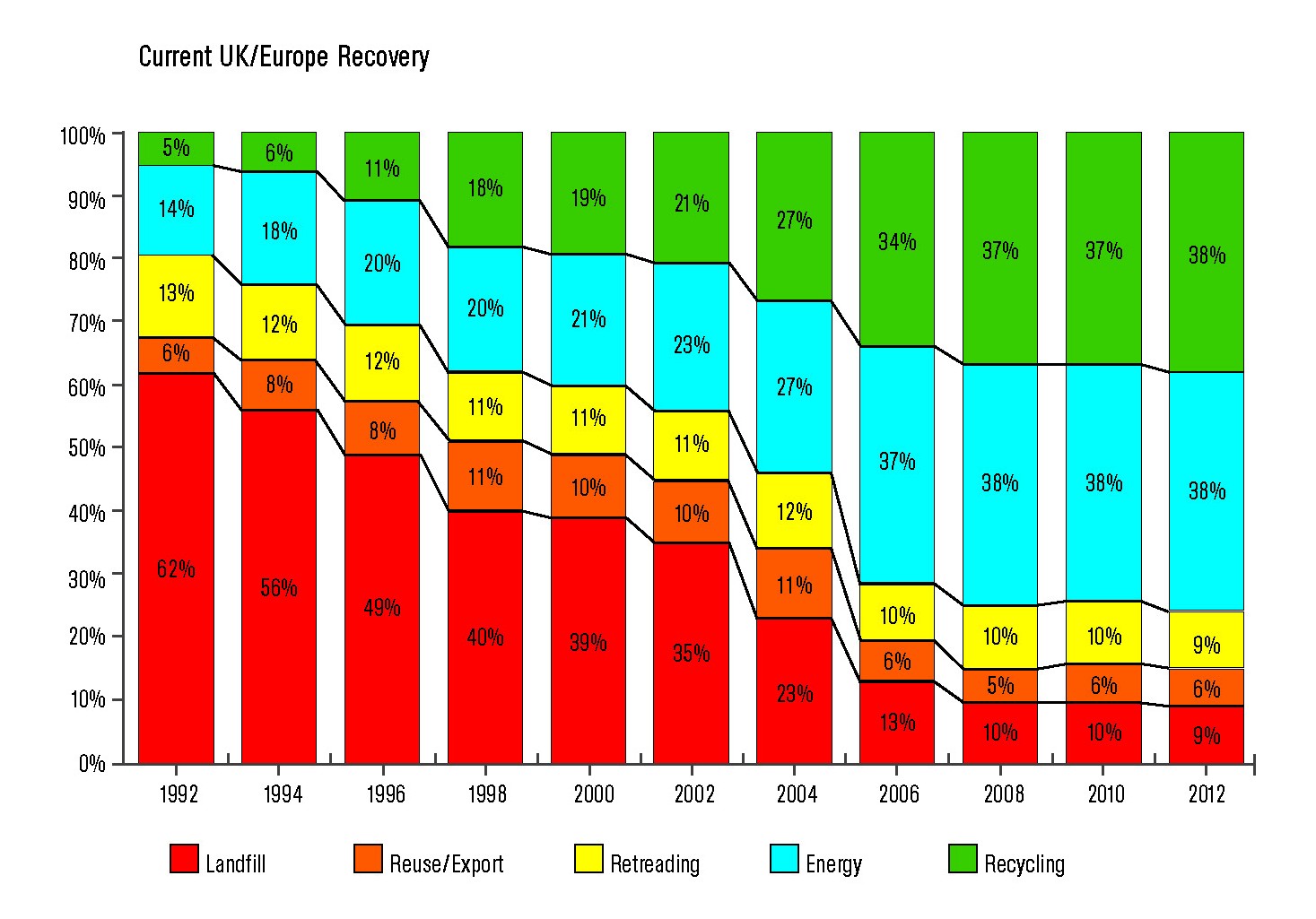Putting rubber on the road
 Source: ETRA
Source: ETRA
The recent history of how we deal with end of life tyres has been littered with ideas, but surprisingly few real success stories. In this opinion piece, Tyre Recovery Association director, Peter Taylor OBE shares his view on the use of tyres in rubberised tarmac.
While the UK and most of but not all of its European partners have long succeeded in meeting the dictates of the EU Landfill Directive we still manage to undershoot when it comes to certain other key objectives such as meeting closer proximity principles or developing a visionary approach to the waste hierarchy in respect of tyres.
After many years of pondering these issues it seems that it is the economics of tyre recycling itself that confound us. Tyres have a high calorific value so are prized as an alternative source of energy. They also have great structural integrity so without some other (usually mechanical) form of intervention are virtually indestructible. In baled form they have useful low cost applications in landfill cell construction and embankment stabilisation projects. It has been a little too easy. Granulation too has developed noticeably in recent years despite competition from less costly processing options. Today we see wide scale use of rubber granulate in play surfaces, sports pitches and the like which is a tribute to all those who have put their time, effort and money in successfully developing these options. Nevertheless, the tyre industry would be complacent in thinking that all this is enough to see us through the next few decades given this frequent reliance on the expedient rather than the inspired.
Current UK/Europe recovery
That we need more high tech higher value uses for tyre-derived granulates and powders is certain but how to get there? Well, when it comes to waste tyre recovery there is clearly too much of what one might term ‘floating’ recovery in most countries, by that I mean ELT arisings that can all too easily switch from one recovery avenue to another with little allegiance to any. The spot market holds too much sway because there is too much short-termism and general unwillingness on the part of most market players to commit to longer term contractual arrangements of the sort that stable markets depend on. Introducing innovative new products and moving up the waste hierarchy is difficult in such circumstances, which is one of the reasons why it is not happening. End of life tyres are a waste stream that we have not yet succeeded in properly valorising and all of us in the tyre industry share some blame for this. We can and must do better, but how?
For a start as I have said there is too much destabilising slack in the market place and the first and obvious step must be to mop up some of this, once this happens the market in tyre-derived materials will stabilise and develop more normally. One key here is the so-called proximity principle mentioned earlier. Ideally, our ELT arisings should be processed as close to home as possible and certainly not transported half way around the world before being incinerated in facilities that would not meet basic EU emissions standards. It does happen.
This brings us back to the very big question which is how to best valorise our ELT arisings. A first step in responding to this question must be to create a substantial and sustainable product stream. Pyrolysis? No, it’s time may be coming but it is not here yet. Rubberised asphalt though is a much better medium term bet and what’s more is already in use in a number of parts of the world, allowing for a certain wisp of national pride, this is one wheel we may not need to totally re-invent. Rubberised asphalt has a number of recognised benefits both in respect of road surface performance and road safety itself. Additionally, the use of rubber granulate in this way would beneficially consume large quantities of tyre-derived granulate. Here are just a few estimates:
- Depending on the mix selected, 1500 processed tyres could produce the material needed for one lane-mile of rubberised paving
- A 10 mile stretch of 6-lane motorway might use 90,000 tyres
Even used selectively in locations where asphalt rubberised would deliver clear benefits we would create significant new demand for crumb rubber and its many benefits vis a vis traditional materials.
So does it work? Experience over many years now suggests that it does. It is widely used in part of North America and in Europe; it has been extensively trialled in at least a dozen countries. Sweden has extensively studied the potential and is implementing a long-term programme. Spain’s Environment Ministry is enthusiastic to the point of developing its own national standards for the use of rubberised asphalt in its highways. The UK should be there too.
But this is not just about national advantage although there are some clear opportunities, it is about Europe as a whole taking a more serious look at what it does and what we could be doing with our end of life tyres. Valorising them better and doing so a lot closer to home.
Peter Taylor OBE is director of the Tyre Recovery Association




Comments